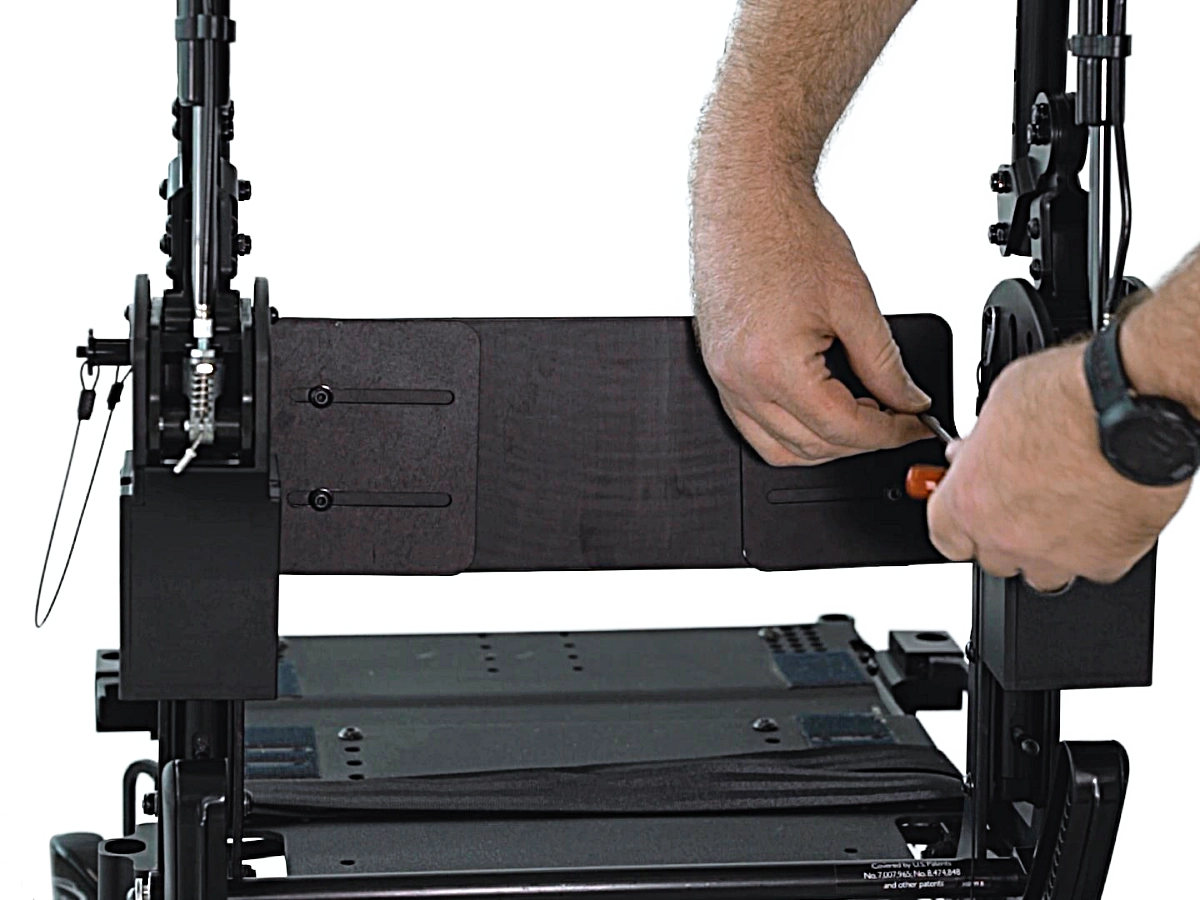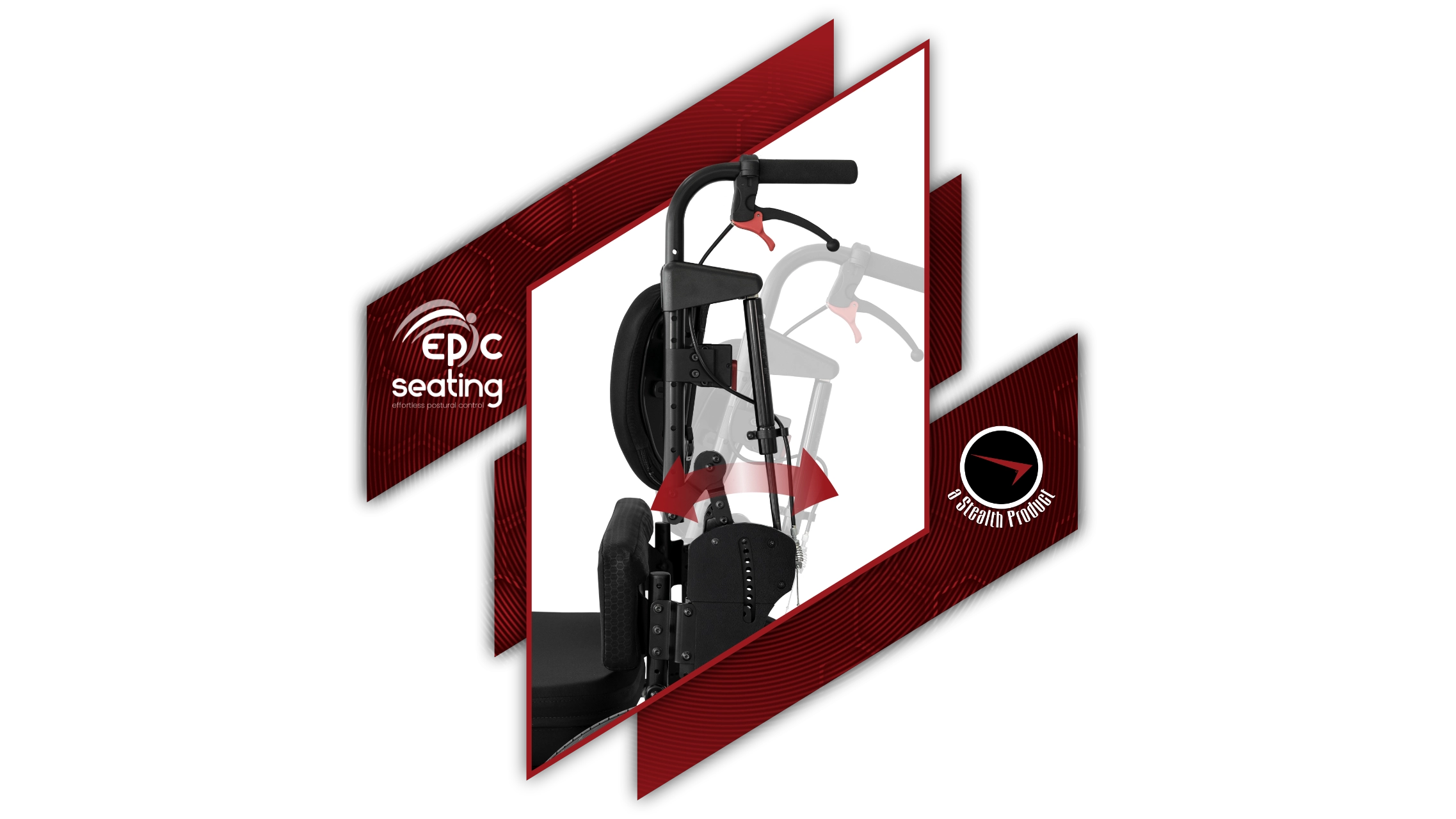
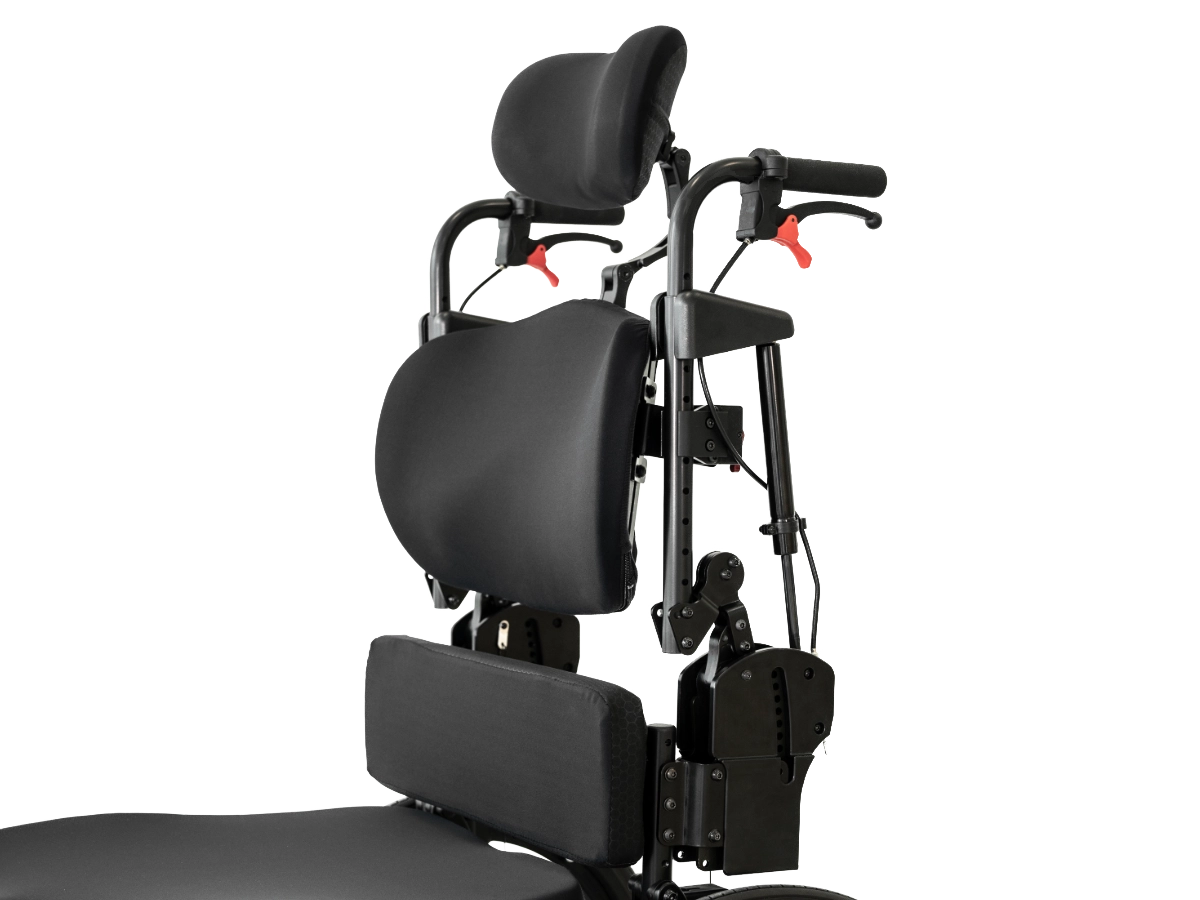
What is EPiC Seating?
EPiC Seating™ is a Postural Management System, allowing us to introduce movement into a wheelchair seating environment. The system provides the ability to change positions for function while maintaining control of the pelvis, mitigating the opportunity to introduce shear.
Why is this concept so important?
We all move, whether it's at a micro or macro level. We are all moving to accommodate function such as pressure off-loading, fatigue management, digestion, respiration, or peer interaction.
EPiC Seating Features:
- Allows a client to reposition independently for comfort or tool-free adjustment by a caregiver.
- Provides multiple resistance levels to accommodate a wide range of clients.
- Set an anatomically appropriate pivot point to reduce shear forces against the client.
- Accommodates secondary supports, such as thoracic laterals, to remain positioned properly during articulation.
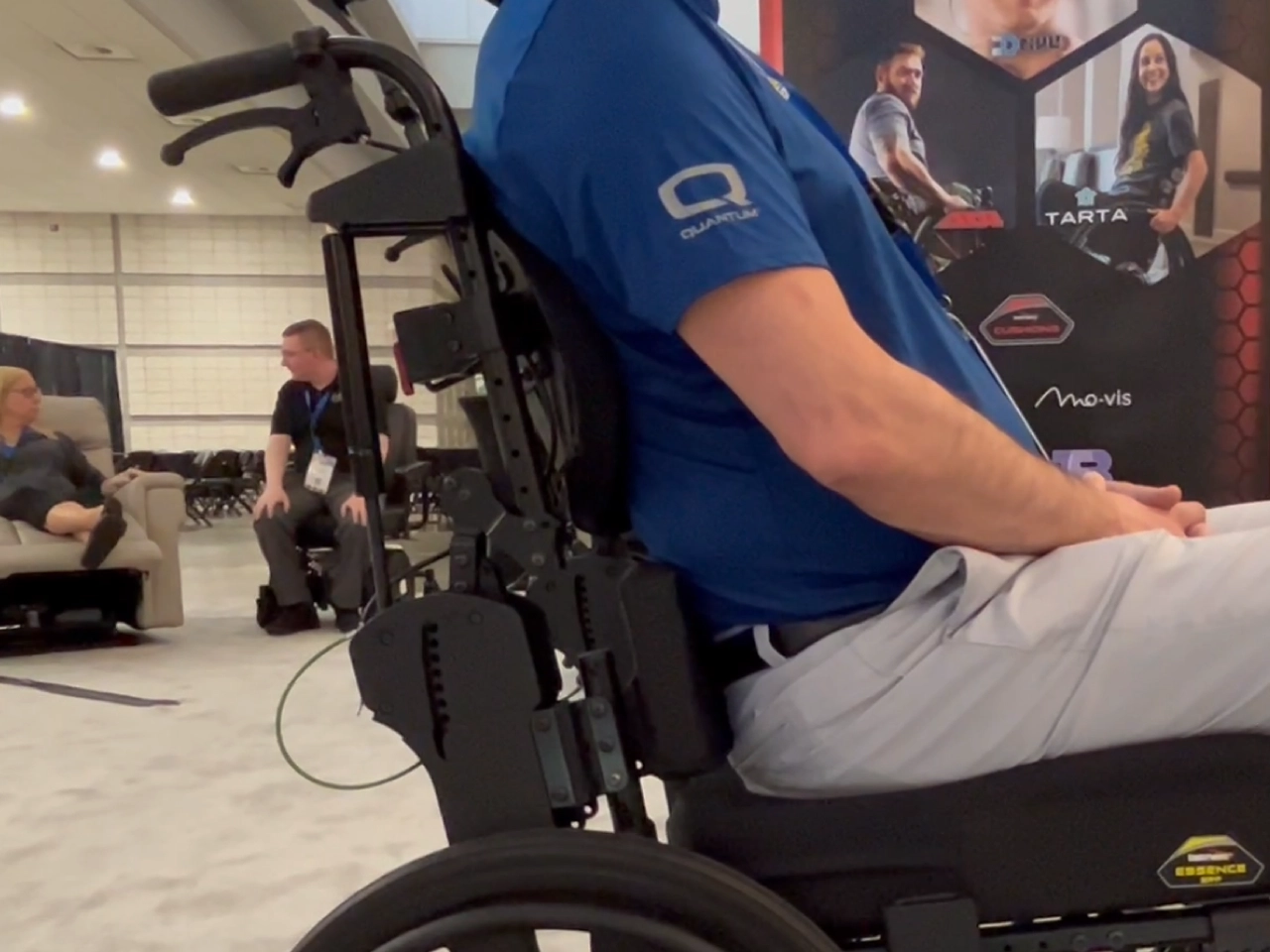

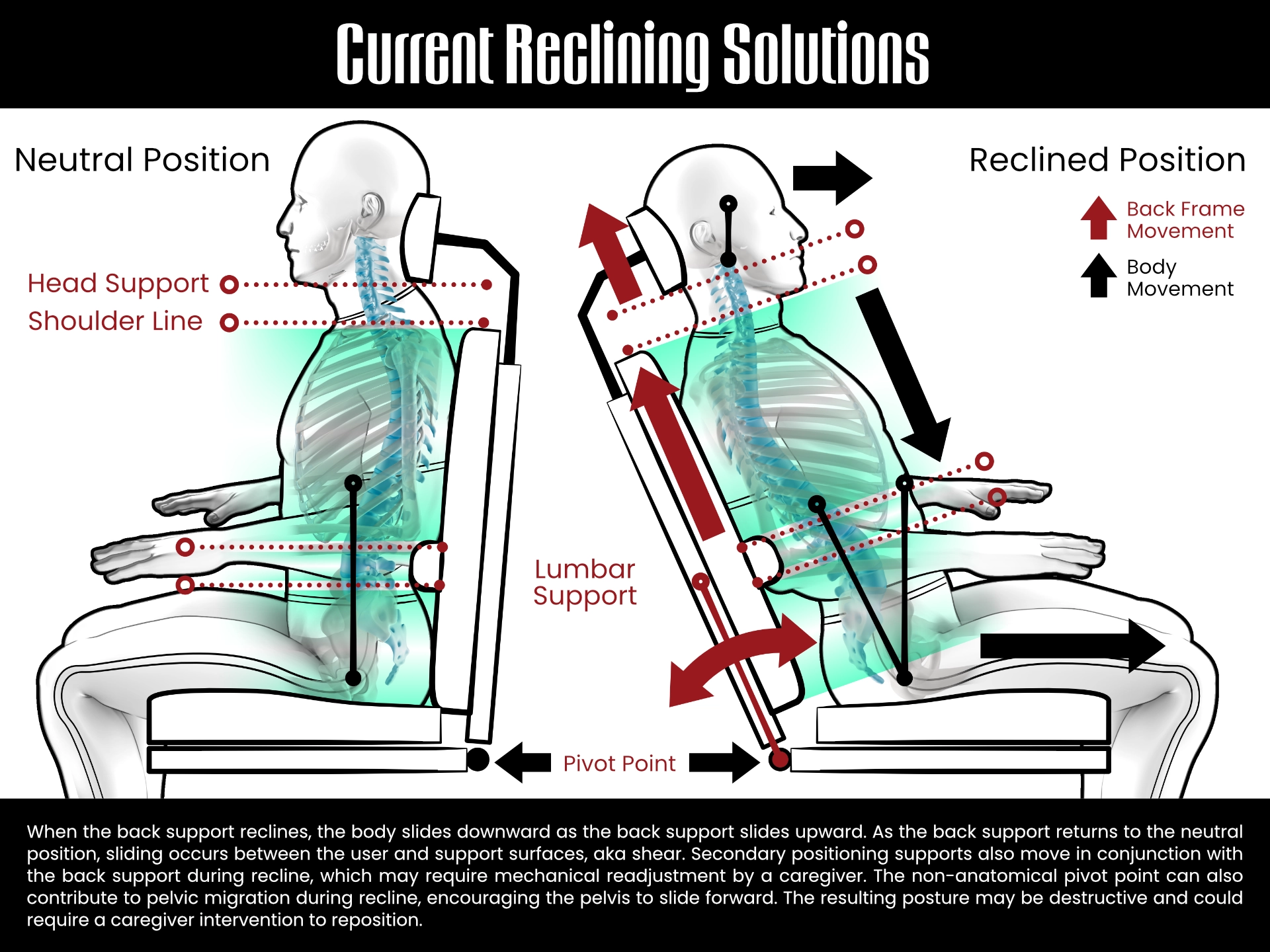
Current Reclining Solution
When the back support reclines, the body slides downward as the back support slides upward. As the back support returns to the neutral position, sliding occurs between the user and support surfaces, aka shear.
Secondary positioning supports also move in conjunction with the back support during recline, which may require mechanical readjustment by a caregiver.
The non-anatomical pivot point can also contribute to pelvic migration during recline, encouraging the pelvis to slide forward. The resulting posture may be destructive and could require a caregiver intervention to reposition.
Current Tilt‑in‑Place Solution
When a system is tilted rearward, the body orientation changes and head positioning will follow. This change can often result in clients looking at the ceiling for extended periods. Many individuals will develop postural accommodations to adjust their line of sight. This behavior introduces trunk flexion, creating more complex postural challenges.
Lumbar Support: As the client relaxes into the lumbar support, they prompt the pelvic area to slide forward.
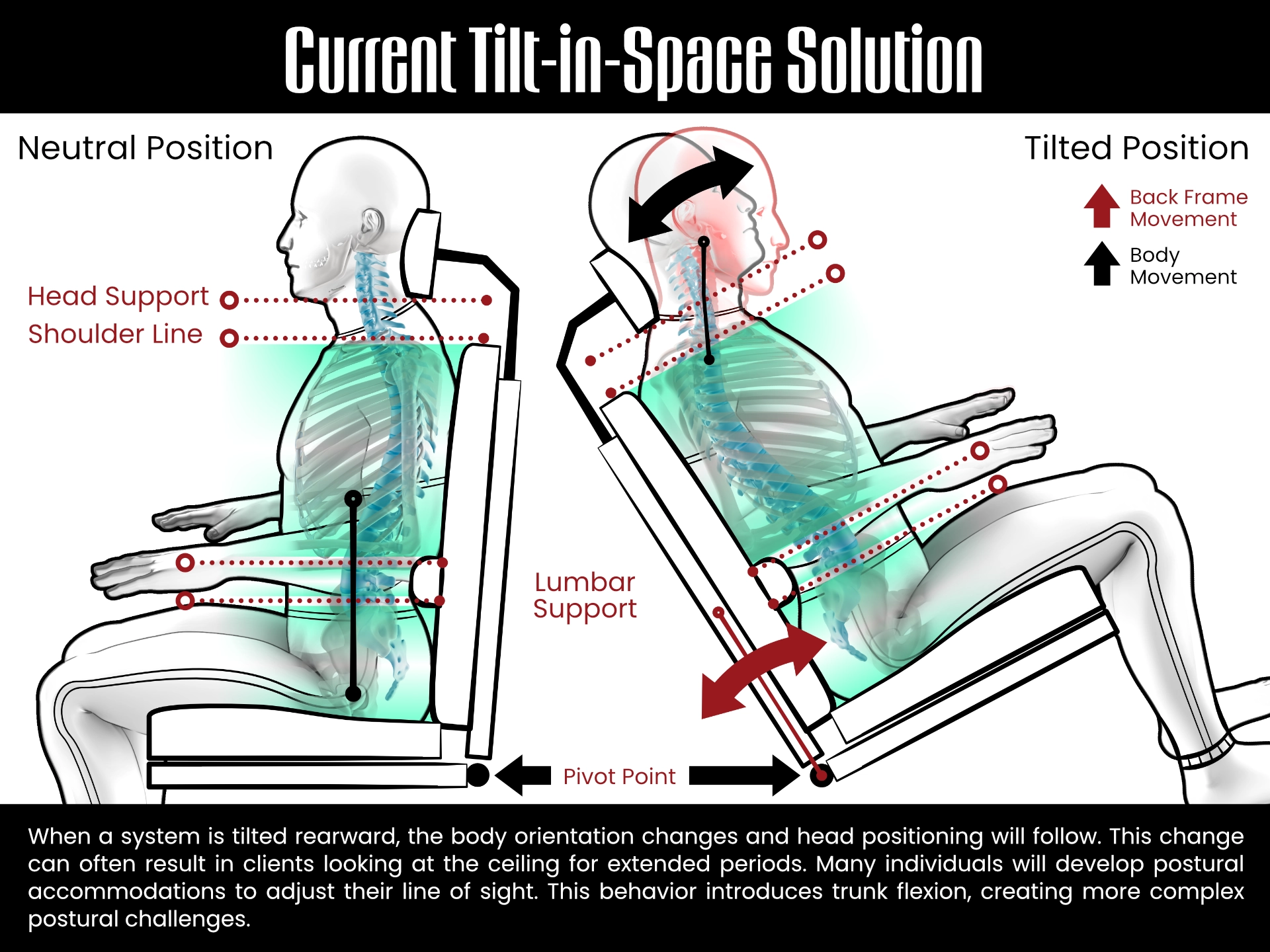
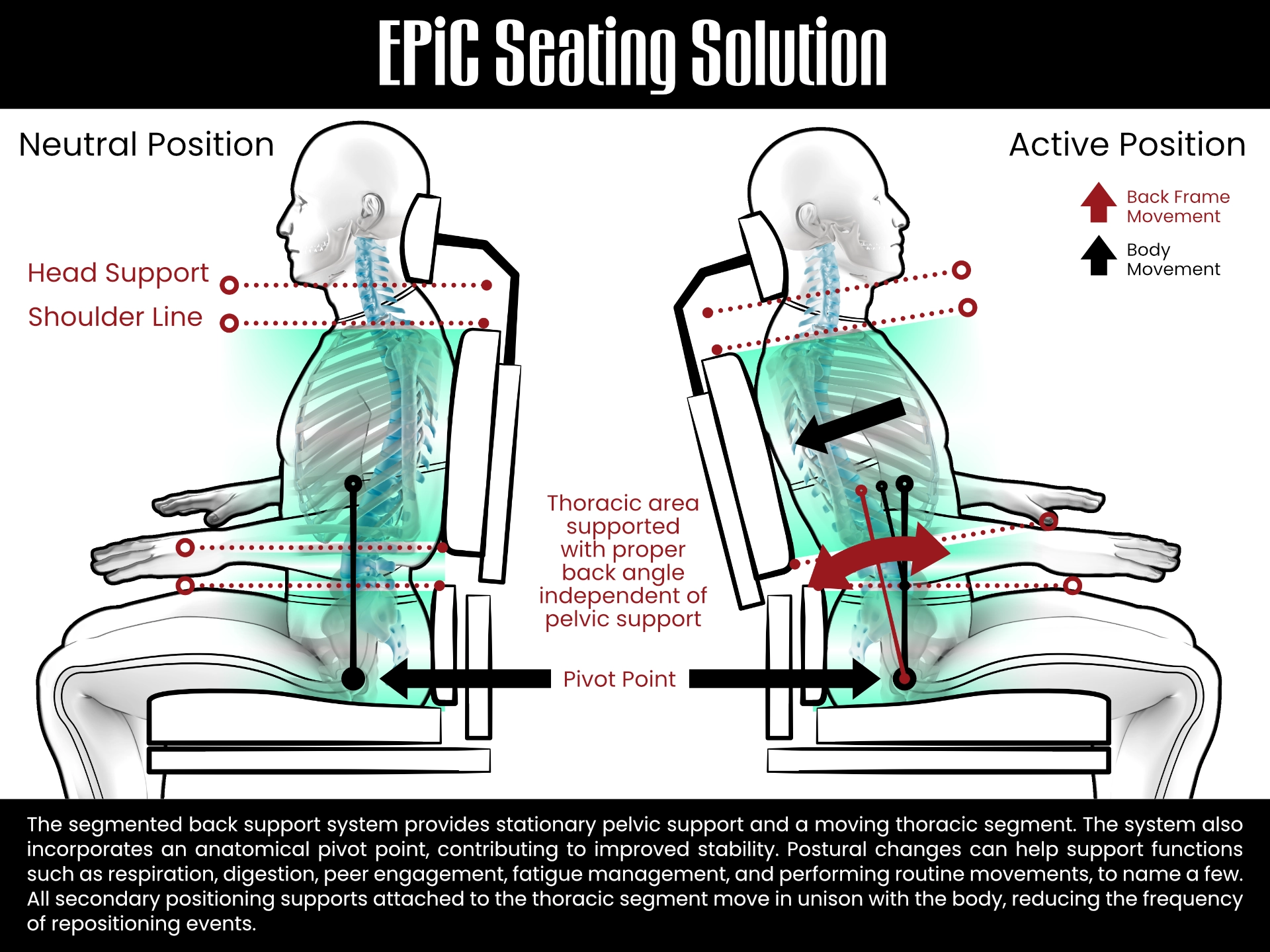
EPiC Seating Solution
The segmented back support system provides stationary pelvic support and a moving thoracic segment. The system also incorporates an anatomical pivot point, contributing to improved stability.
Postural changes can help support functions such as respiration, digestion, peer engagement, fatigue management, and performing routine movements, to name a few.
All secondary positioning supports attached to the thoracic segment move in unison with the body, reducing the frequency of repositioning events.

Postural Management System
The postural management system consist of:
- Telescopic 1in (2.54cm) back mounting canes: with height adjustable handles. The handle's cane is 7/8in (22.23mm).
- Quick Adjustment Lever: Help adjust posterior thoracic support angle without the need of additional tools.
- Gas Struts: Offers a more natural load absorption movement. Available in two resistance levels. 50 or 100 Newtons.
- Pivot Point: EPiC Seating rotates around an imaginary point to the client's pelvis helping to reduce shear.
Resistance Levels
- 50N:
Ideal for clients with limited active movement or posterior pelvic tilt. - 100N:
Ideal for clients with normal to highly active movement.
Back fitting
- Backrests: EPiC Seating will fit most after market backs. Consider the pelvic support height, which for the moment it is only available with a frame height of 6in (15.24cm), but other options will be available soon.
- Back Mounting Hardware: Any 1in (2.54cm) back mounting hardware will fit the EPiC Seating.
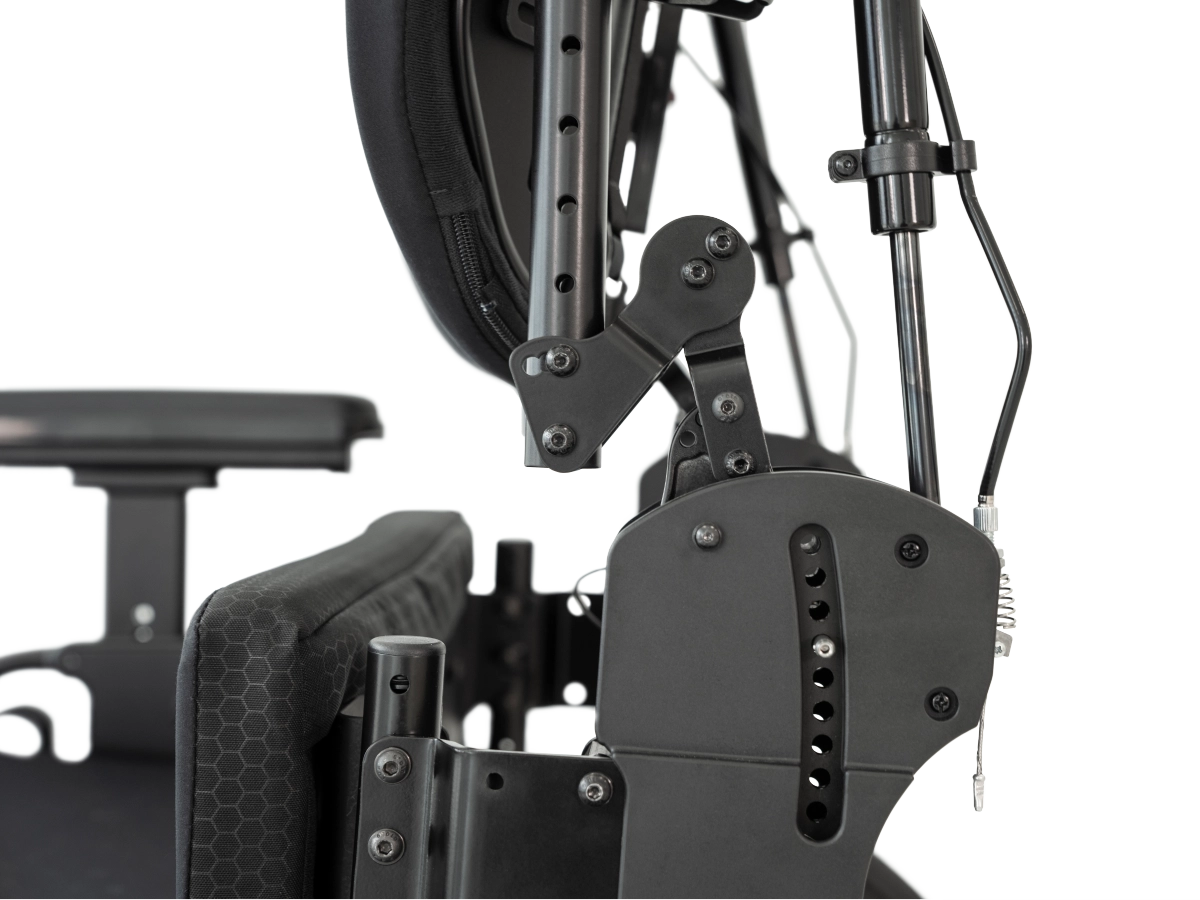
Compatible Frames
- Freedom Designs® P.R.O. GG™
- Invacare®
- Ki Mobility®
- Leggero© Enzo™
- Quantum® Tru-Balance® 3 (Soon)
- Sunrise Medical® Quickie® IRIS®
- European Market Only
- More to come
Compatible Frame Width
Small
to 16in (40.64cm)
Medium
to 21in (53.34cm)
Large
to 26in (66.04cm)
